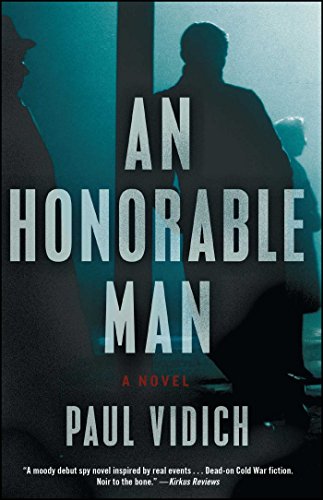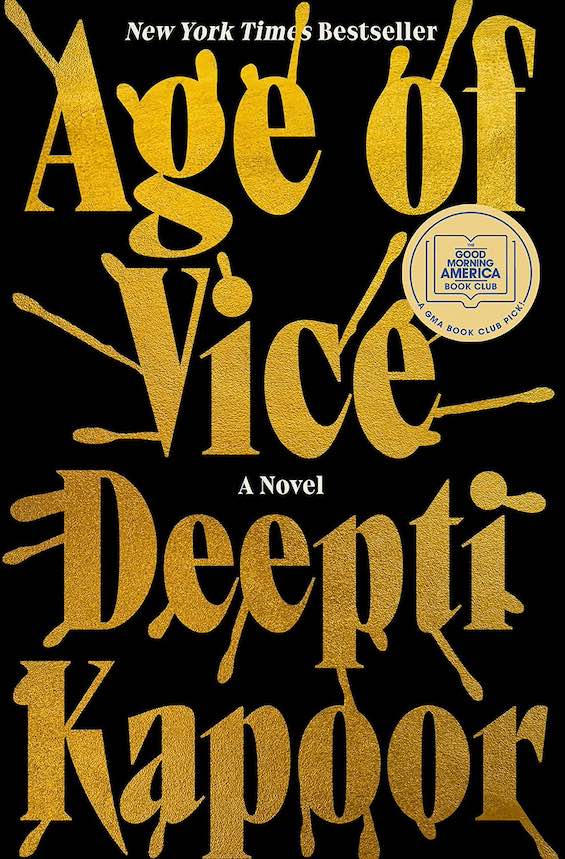
Half a century ago we learned from John le Carré about amorality and corruption in the world of espionage. Other authors have written hundreds of books about spies since then. Some, including Alan Furst, Charles Cumming, Olen Steinhauer, Dame Stella Rimington, and Joseph Kanon, for example, have made their own estimable contributions to the genre in recent decades. But only rarely has their work brought to light the sheer ugliness of the espionage craft and what damage it wreaks on those who practice it. However, there is an exception.
Estimated reading time: 5 minutes
In his first novel, An Honorable Man (2016), the American short story writer Paul Vidich brings to life a veteran officer in the early CIA who is honorable only in an ironic sense. The world he inhabits, and the life he lives, are fraught with dreadful expectations and impossible choices.
An Honorable Man (George Mueller #1) by Paul Vidich (2016) 289 pages ★★★★☆
“Where once there was a struggle between good and evil,” Vidich writes in a vein reminiscent of le Carré, “the clarity was gone, and he was in a new gray-toned world where right and wrong blurred. The many innocent people who were collateral damage haunted him. He knew himself well enough to recognize the signs that he was becoming a burnt-out case.”
It’s January 1953. Senator Joseph McCarthy (identified in the novel only as “the senator”) is foaming at the mouth about alleged Communists and homosexuals in the State Department. General Dwight Eisenhower has not yet moved into the White House, and Allen Dulles is still bitterly serving as deputy director of the CIA (though never identified in the novel). The director is an admiral modeled on the man who actually held that office at the time—the three-star general who had served as Eisenhower’s chief of staff in World War II. The CIA, now just six years old, is still largely run by the freewheeling former OSS officers recruited upon the agency’s formation in 1947, but bureaucratic ways have begun to take hold. Younger recruits regard the old hands as past their sell-by date.
These same old hands, executives at the highest levels of the early CIA, are frantic with worry that there is a Soviet mole in their midst. They’re equally worried that the FBI will expose them to Senator McCarthy’s witch-hunt if they learn the mole’s identity. George Mueller is one of four top CIA officers who have been tasked with identifying the double agent, code-named Protocol. He and his colleagues are investigating a list of suspects that is much too long for comfort, and it is troubling that none of the four is on the list despite obvious circumstantial evidence pointing to them.
George Mueller wants out, but he’s the only one the Director can trust
George is profoundly unhappy with his life and his work. He has made clear to the director and to all of his close colleagues that he wants to leave the CIA. But the admiral refuses to accept his resignation, insisting that George is the only one of the four men on the top-secret Protocol task force that he can really trust. With great reluctance, George persists in pursuing the mole. He feels surrounded by enemies.
One is FBI Special Agent Walker, who does not find it difficult to imagine that George himself is a Soviet agent. Another is James Coffin, the director of Counterintelligence, who sits on the Protocol task force with him. (Coffin somewhat resembles the real-life James Jesus Angleton, the brilliant paranoid schizophrenic who tore the CIA apart in his relentless search for a mole for two decades from the 1950s to the 1970s—a mole he never found.) As evidence mounts that there is indeed a traitor to be found, George finds himself under ever greater pressure.
Was there a traitor in the CIA?
Officially, the CIA would have us believe that the only traitor who turned up during Angleton’s reign as the agency’s counterintelligence chief (1954-75) was his close personal friend, the notorious KGB spy, Kim Philby of MI6. However, in the acknowledgments at the back of his novel, Paul Vidich writes the following:
“On the morning of April 1, 1953, James Speyer Kronthal was found dead in the upstairs bedroom of his red brick town house in Georgetown by Metropolitan Police, who had been summoned by his longtime housekeeper when she arrived at 8:30 and found the home suspiciously quiet. He was fully clothed, sprawled on the floor, an apparent suicide. He wasn’t shot, as [the mole] is in the novel, but in many other respects my character is based on the sad, troubled life of James Speyer Kronthal.” Q.E.D.
For related reading
I’ve also reviewed four other excellent espionage novels by Paul Vidich:
- The Coldest Warrior (Project MK-Ultra and the scientist who fell to his death)
- The Mercenary (A superb Cold War thriller from Paul Vidich)
- The Good Assassin (A compelling spy novel by Paul Vidich set during the Cuban Revolution)
- The Matchmaker: A Spy in Berlin (A dangerous spy game in Berlin before the fall of the Wall)
And you can find all of Vidich’s books at A newcomer who writes superb spy novels.
You might also enjoy my posts:
- The 15 best espionage novels
- Good nonfiction books about espionage
- The best spy novelists writing today
- Top 10 mystery and thriller series
For an abundance of great mystery stories, go to Top 20 suspenseful detective novels. And if you’re looking for exciting historical novels, check out Top 10 historical mysteries and thrillers reviewed here.
For reviews of a series of other novels that overlap this historical period, see Olen Steinhauer’s brilliant Yalta Boulevard cycle set in Eastern Europe.
And you can always find my most popular reviews, and the most recent ones, on the Home Page.

























